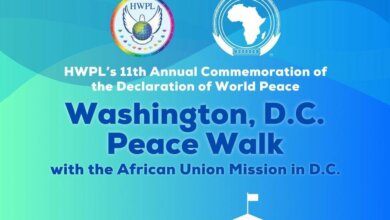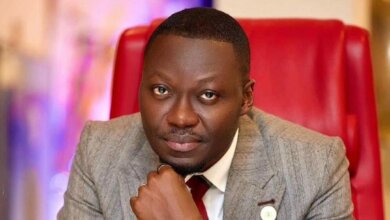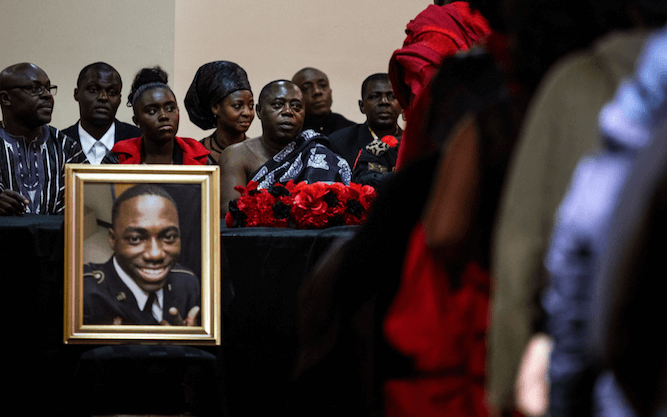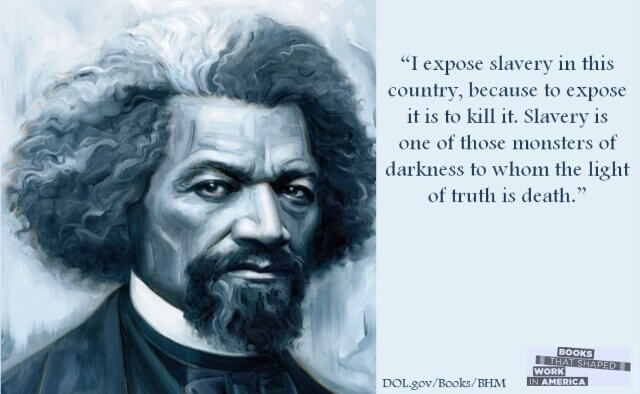‘It is our time in Africa’ says Ghanaian-Scottish architect, Lesley Lokko

The Ghanaian-Scottish architect is curator of this year’s Venice Architecture Biennale, and more than half of the participants will be African. The story of architecture we are used to, she says, is incomplete
“Africa” says Lesley Lokko, stopping over in a London hotel on the way from Accra to Venice, “is the world’s youngest continent. It is the most rapidly urbanising and has the fewest architects.” It is therefore a place of instability and invention, minimally constrained by professional structures, where the “speed of change is likely to outstrip the ability to understand it”. Its countries, meanwhile, have on average the oldest political leaders, which makes for a gap between governance and the pace of events.
These factors make Africa, for Lokko, a place where the future is taking shape, one of unpredictable creation and imagination, qualities that she plans to bring to the ancient city of Venice, that highly preserved embodiment of things past, just under two months from now. Lokko is curator of this year’s edition of the Venice Architecture Biennale, the world’s most significant and influential celebration of things architectural. Under the title The Laboratory of the Future, she intends to get “Africa talking to the world”.
The Biennale is a grand exhibition, with associated events and publications, spread out over different locations in the city. It includes venues in which the curator directs the content, such as the old rope-making works of the historic Arsenale, and national pavilions where teams from different countries create their own displays on the year’s theme. Until now, the Biennale has been decidedly Eurocentric, with some contributions from the Americas and south-east Asia.
Lokko’s version, with more than half of its 89 participants from Africa or the African diaspora, will dramatically change the balance. In the process, she wants to expand the possibilities of what architecture might be. She is not “trying to say that the story of architecture as usually told is wrong, but that it’s an incomplete story”.
READ ALSO: Researcher Fallou Ngom unearths ‘Ajami’ — an old African writing system
Citing as a personal inspiration Mies van der Rohe’s Farnsworth House in Illinois, a crystalline steel-and-glass box that is an ultimate example of canonical buildings by dead white men, Lokko insists she doesn’t want to reject buildings like this, only to show that other ways are possible.
Her life has given her a broad view. Born to a Scottish mother and a Ghanaian father, she has spent most of her career in architectural education, in Britain, the US, South Africa and elsewhere, and in 2020 she founded the African Futures Institute, a postgraduate school of architecture in Accra. She has also found time to write fiction – Lokko’s 12th novel will be published next year – on themes of identity and colonisation.
Her Biennale will accordingly range widely. Alongside established names such as the Burkinabe-German architect Francis Kéré and the Ghanaian-British David Adjaye, she has invited 22 “emerging” practices under the heading “guests from the future”. The youngest participant will be 24. There will be a special four-week Biennale “college” where students from all over the world have been invited to study.
While exhibitors will include designers of buildings – for example atelier masōmī, Niger-based makers of beautiful cultural and housing projects – the definition of architecture will also be stretched to include “film, investigative journalism, adaptive reuse, land reclamation, grassroots community-based practice”. Visitors to the Arsenale will be greeted by performance pieces by the poet Rhael “Lionheart” Cape on the themes diaspora and dispersal, bathed in a light “reminiscent of the blue hour,” a twilight time “associated with nostalgia”. Three “workshops”, described as “full of sunshine and dusty sunlight”, will present urban projects “thwarted” by such things as politics, capital and climate catastrophe.
If it’s not entirely clear where this multifarious burst of energy will lead, that seems to be part of the point. In her teaching, Lokko likes to encourage students, if they wish, to go beyond their professional boundaries, into politics or economics or activism. Things that Africa might now teach the world, she believes, include the rearrangement of old disciplines. There, she says, “things are often not stable. In that instability you have to learn how to be very adaptive.”
“Often,” she says, “the global south is perceived in terms of its problems. There is a strong narrative of lack. Things like imagination and creativity are perceived as the prerogative of the global north – it’s assumed that you need resources for them.” The reverse, she believes, could be true, that “beauty and joy and inspiration” are both more likely to be found in less prosperous countries, and more essential. “They are really powerful political tools,” she says, “not frippery.”
READ ALSO: Profile: Francis Kéré, first African to win Pritzker Prize, Architecture’s Nobel
There’s obvious peril in building her project around the concept of “Africa” – one historically imposed from outside – but Lokko believes it has value. “It’s a fact that Africa stands for something that comes from outside. But Africans share something that is 100% there. There is a sense, particularly among the young, that the time has come to define that something on their own terms. There is a sense that it is our time.”
One outcome of her efforts could be an opening up of the smallish number of categories into which African architecture tends to be divided. There is the reverence sometimes paid to traditional construction, of earth-built villages and settlements, and more recently an interest in the blossomings of free-form concrete that go under the name of “tropical modernism”. Attention is sometimes given to the self-organising and improvisatory genius of shanty cities such as Kibera in Nairobi or Makoko in Lagos. All are rich and significant, but there is assuredly more to the continent’s buildings and cities.
Lokko was impressed, for example, by the way some of her South African students responded to Wakanda, the fictional city of towers and pinnacles in the Black Panther movies. Although not so sure about its “pastiche” architecture herself, she saw them “in floods of tears. Something about it hit them very deep in terms of self-esteem and self-worth, the fact that it was even possible to imagine something like this.” Her African students, she says, “have a deep longing to be in control of their own voices”, and it was to that the film spoke.
Lokko says she would like to find out “what Wakanda would look like after 10 years of thinking about the relationship between the future and technology, or between sustainability and social justice or public health, so it doesn’t look like Dubai on steroids”.
It’s unlikely that this year’s Biennale will supply all the answers, and she doesn’t expect it to. It will be, Lokko says, one step of many. Just by being there, by putting into Venice works and designers of a kind never seen there before, her Biennale is likely to be a powerful beginning.
The Venice Archiecture Biennale runs from 20 May to 26 November
Source: The Guardian
READ ALSO: Anthony Amoako-Attah displays tribal identity at Heller Gallery’s glass art exhibition
Abeeb Lekan Sodiq is a Managing Editor & Writer at theafricandream.net. He is as well a Graphics Designer and also known as Arakunrin Lekan.





